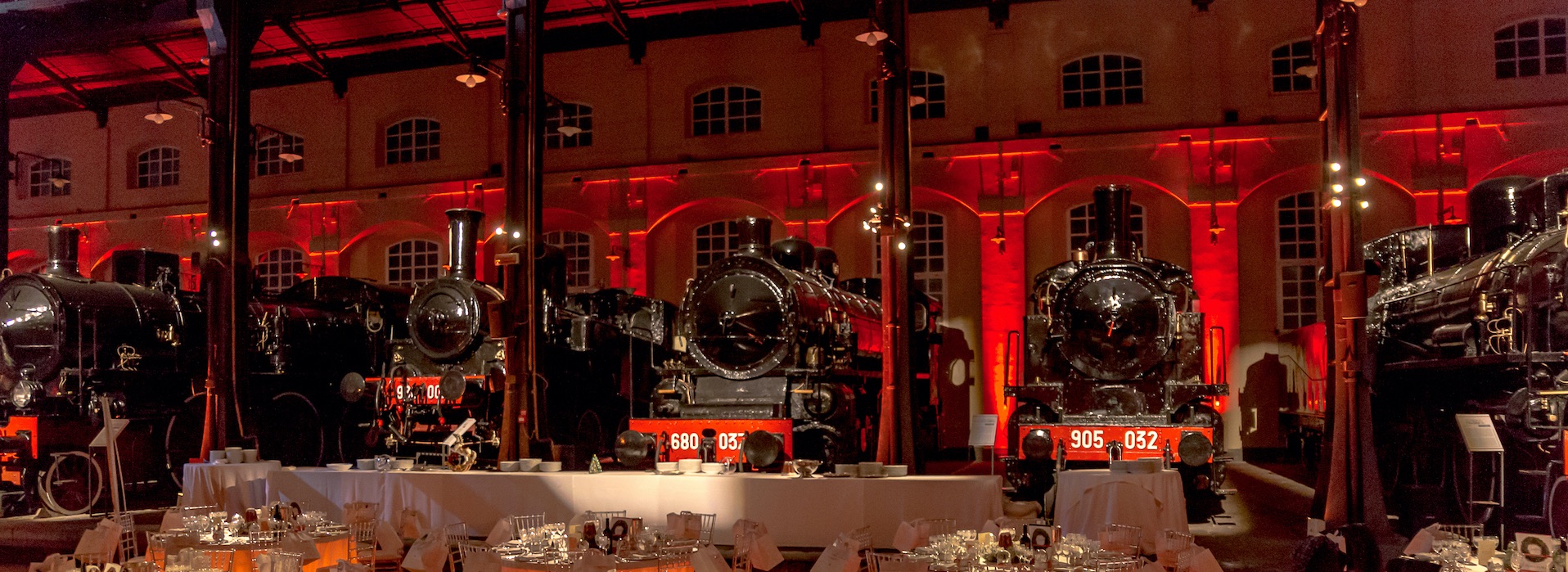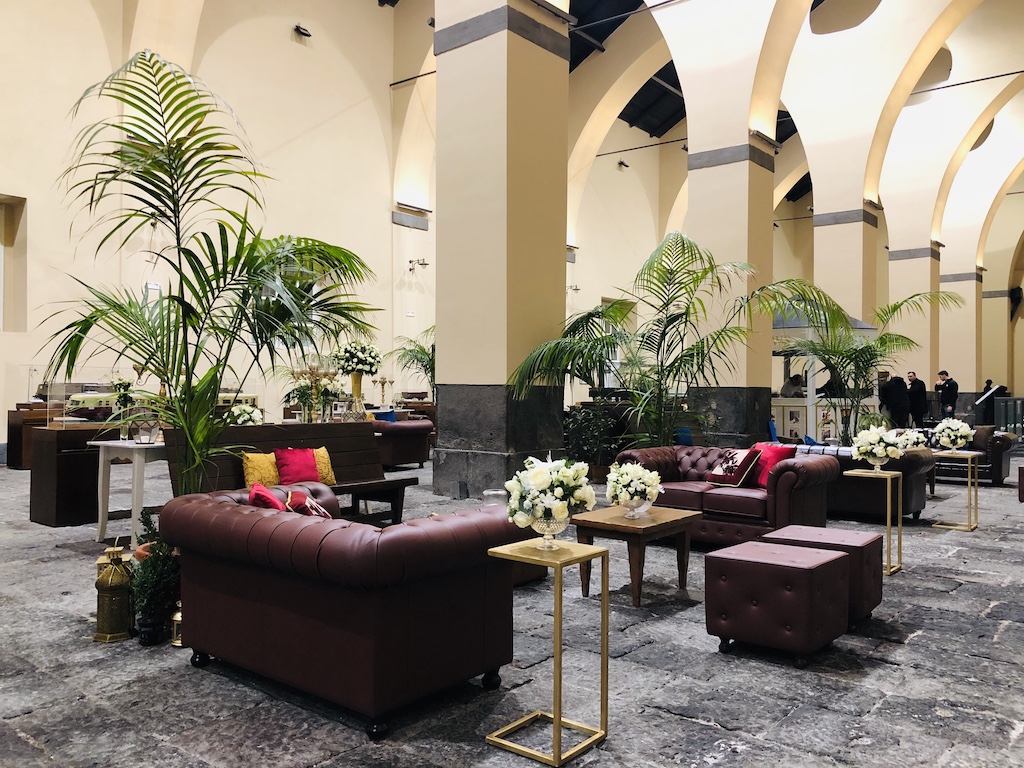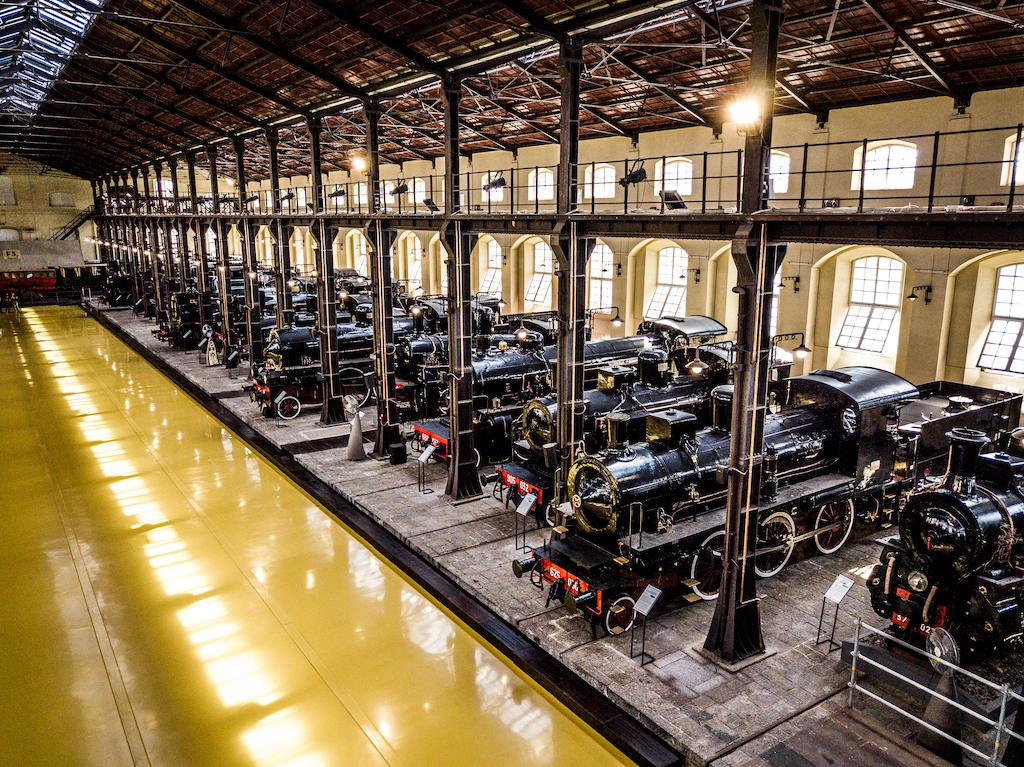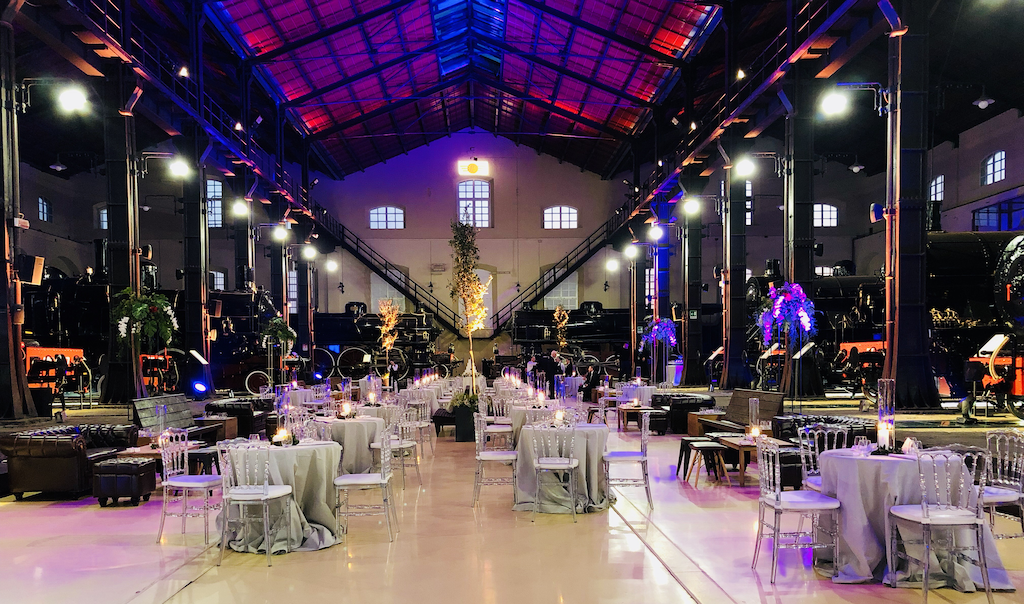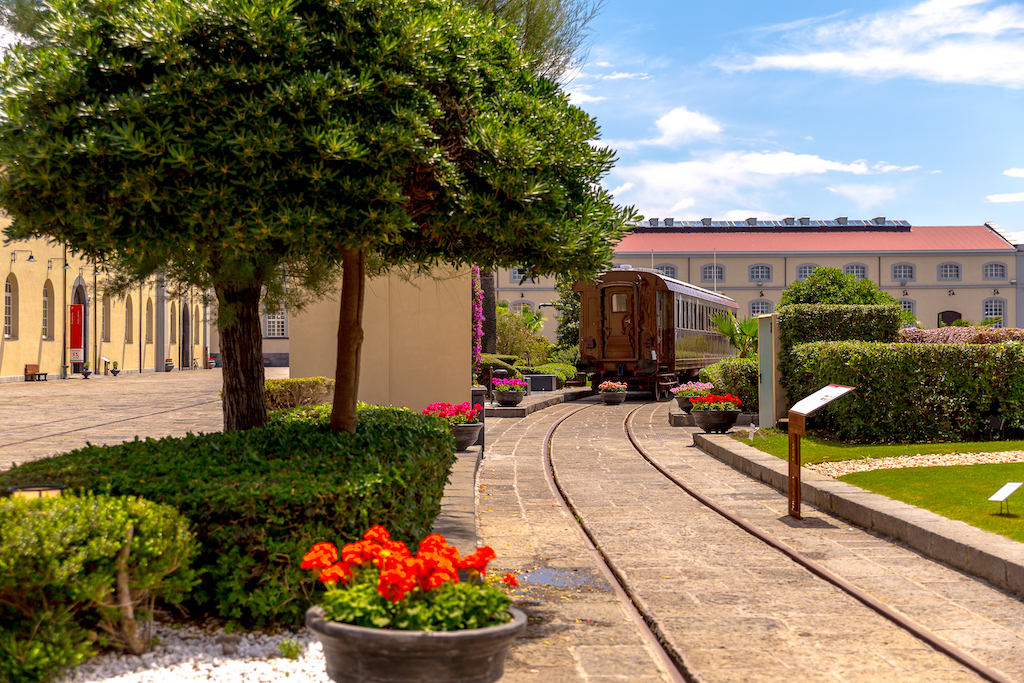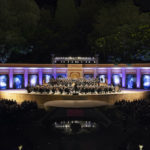THE NATIONAL RAILWAY MUSEUM OF PIETRARSA
THE HISTORY AND THE COLLECTION
The Pietrarsa Museum, one of the most evocative museums in our area, allows you to embark on a fascinating journey through time among the locomotives and trains that have united Italy from 1839 to the present day, in the 180-year history of Italian railways.
The buildings that now house the museum are the pavilions of the Royal Mechanical, Pyrotechnic and Locomotive Factory founded by Ferdinand II of Bourbon in 1840 to free the Kingdom of the Two Sicilies from the English and French technical supremacy. The workshops were built precisely in correspondence with the first Italian railway section, the Naples-Portici line, inaugurated on October 3, 1839.
Pietrarsa therefore represents the first Italian industrial nucleus (it precedes the foundation of Breda by 44 years and that of Fiat by 57), active until the 1970s, when the rise of electric and diesel locomotives determined the decline of steam and, at the same time, the factory. In 1977 the workshops were then destined to become a railway museum, inaugurated in 1989 after the adaptation works.
Thanks to the restoration work that took place between 2014 and 2017, the National Museum of Pietrarsa has become the prestigious and fascinating place we know today.
The architecture of the nineteenth-century pavilions have been restored and the outdoor spaces enhanced with the planting of the Mediterranean Garden and a new glass parapet for the terrace on the seafront, which offers a unique view of the Gulf of Naples. New technologies also play an important role in the new life of the museum: the cinema room equipped with the most performing audio and video equipment, the comfortable and functional congress hall and the new interactive visit methods, with virtual reality systems and dedicated apps, make Pietrarsa one of the most important railway museums in Europe.
The Museum is spread over an area of 36,000 square meters, of which 14,000 are covered, and it is divided into pavilions and sectors in which material of absolute value is exhibited, including: the faithful reproduction of the Bayard, the inaugural train of the first Naples railway section – Porticoes of 1839; carriage 10 of the Royal Train built by Fiat in 1929 for the wedding of Umberto II of Savoy with Maria Josè of Belgium; several steam, diesel and electric locomotives, models, various railway objects including the famous model “Trecentotreni” 18 meters long and more than 2 wide, which was built by a railway worker in over 15 years.

